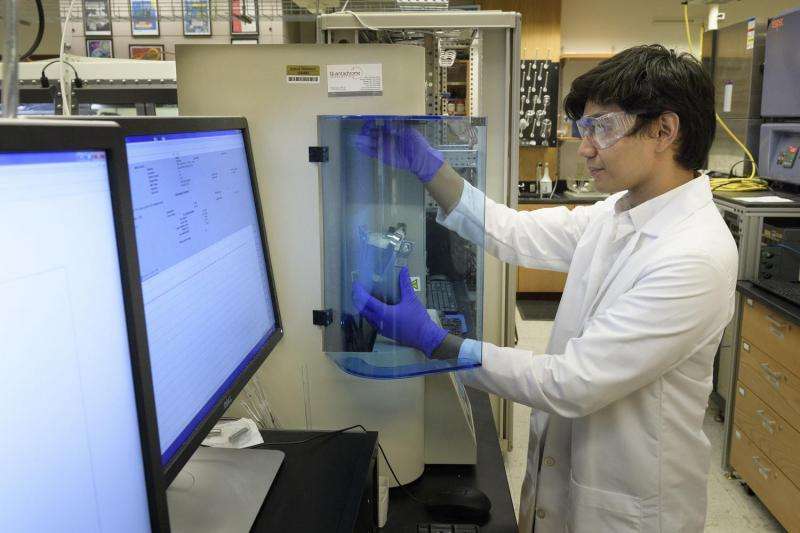Process turns wheat flour into CO2-capturing micropores

Researchers have shown how a process for the "carbonization" of wheat flour creates numerous tiny pores that capture carbon dioxide, representing a potential renewable technology to reduce the industrial emission of carbon dioxide into the atmosphere.
"With increasing carbon dioxide emissions, global warming is accelerating, accompanied by abnormal climate changes," said Vilas Pol, an associate professor in Purdue University's School of Chemical Engineering and the School of Materials Engineering. "It is imperative to develop efficient methods for capturing carbon dioxide."
Purdue researchers developed a process that creates carbon compartments from wheat flour. Collaborating with researchers at Korea University in Seoul, South Korea, they studied carbon dioxide capture in these unique carbon compartments. The chemical compound potassium hydroxide was used to "activate" – or generate many small pores – in the wheat flour inside a furnace at 700 degrees Celsius.
The carbon dioxide is "adsorbed," or bound to the material's surface inside the micropores.
"The outstanding overall carbon dioxide adsorption performance indicates that potassium hydroxide-activated microporous carbon compartments can be a promising approach," said associate professor Ki Bong Lee from Korea University.
The researchers varied the ratio of potassium hydroxide to carbon until finding a formulation that performed the best.
Findings are detailed in a research paper appearing on Tuesday (Oct. 4) in the journal Scientific Reports. The paper was authored by researchers Seok-Min Hong and Eunji Jang, graduate students from Korea University; Purdue chemical engineering doctoral student Arthur D. Dysart; Pol; and Lee.
Findings showed the rate of carbon dioxide adsorption depends on the material's volume of micropores with a pore size less than .8 nanometers. The researchers also demonstrated that the material can be rapidly used over again to repeatedly capture carbon dioxide.
Future research will include work to adsorb larger quantities of carbon dioxide.
More information: Seok-Min Hong et al. CO2 Capture in the Sustainable Wheat-Derived Activated Microporous Carbon Compartments, Scientific Reports (2016). DOI: 10.1038/srep34590
Journal information: Scientific Reports
Provided by Purdue University





















